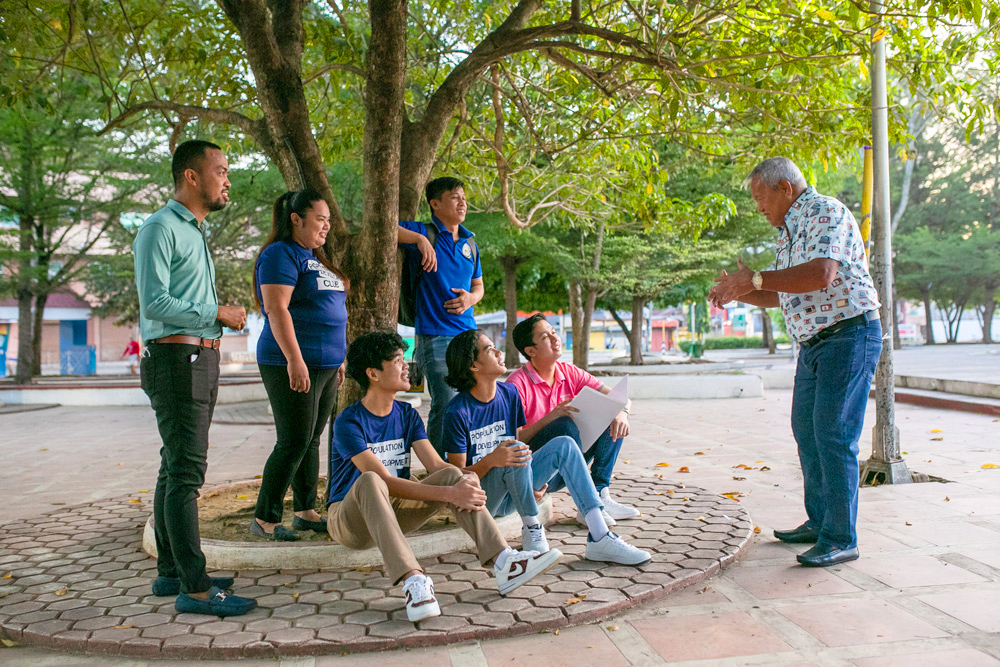Dipolog, Cagayan de Oro lead battle in curbing teenage pregnancy
Features | by Almi Atienza

By Cristina Eloisa Baclig
MANILA, Philippines—As the country continues to address teenage pregnancies among Filipino girls, two cities—Cagayan de Oro and Dipolog City—have already started seeing a significant decrease in the birth rate for adolescent mothers through effective interventions.
After a year since the prevention of teenage pregnancies had been declared a “national priority,” the adolescent birth rate (ABR) in Dipolog City fell from a high 73.8 per 1,000 girls (aged 15-19 years) to 30 in 2022.
Similarly, Cagayan de Oro has observed a huge reduction in its ABR from 47.4 five years ago to 34 in 2022.
The decline in the number of Filipino women in Dipolog and Cagayan de Oro cities who are confronting pregnancy at an early age was attributed to “data-driven innovations and high-impact programs” that heavily focused on youth involvement.
Among these programs undertaken by the city governments to provide solutions to curb teenage pregnancies was The Challenge Initiative (TCI), a five-year urban reproductive health program co-managed by the Zuellig Family Foundation (ZFF) and the Bill & Melinda Gates Institute for Population and Reproductive Health.
The program, which started in 2020, encouraged several areas nationwide to transform into adolescent-friendly cities that actively address the sexual and reproductive health needs of the youth in their communities to reduce unintended teenage pregnancies.
It also aimed to enhance the accessibility of family planning programs and promote positive health-seeking behavior among Filipino youth and adolescents.
Successful interventions
In just two years after Dipolog City joined an earlier ZFF program, which spanned from 2017 to 2020, the local government was able to address and reduce the growing cases of teenage pregnancies in the city.
In October 2020, Dipolog City was accepted as one of the pilot cities under TCI, which led to high-impact interventions to engage city governments, health providers, communities, adolescents and youth, and other stakeholders in providing adolescent and youth sexual and reproductive health (AYSRH) information and services in urban communities.
As part of the initial batch of cities engaged with TCI in the Philippines, the local government of Dipolog launched the “Team Batang Ama Batang Ina Initiative” or BABII—a task force created to address Adolescent and Youth Sexual Reproductive Health (AYSRH) issues including teenage pregnancies in the city.
The Child and Youth Code, “which included provisions on health education for the youth, addressing mortality and morbidity of teenage pregnancy, and promoting reproductive health and family planning for youth parents,” was enacted into a local ordinance last year.
Aside from the city’s well-developed and well-functioning AYSRH system, the local government also increased the modern contraceptive prevalence rate (mCPR) from 39 percent in 2018 to 53.72 percent last year.
This year, the city was given resources—around P9M in investments—to create more family planning programs to further bring down cases of teenage pregnancy in the city.
Cagayan de Oro City, also among the early TCI sites, has also recorded an increase in mCPR from 29 percent in 2020 to 36 percent in 2022—an achievement attributed to “engaging the youth through various programs that speak their language.”
Several youth-led initiatives were also launched in the city through the ZFF’s Youth Leadership and Governance Program—which trained youth leaders of the Sangguniang Kabataan, or youth council, to lead in the creation and implementation of AYSRH programs in different areas in the city.
“The TCI is a vital driver to help us expand our initiatives to become an adolescent- and youth-friendly city as we create a safe space where young girls and boys can easily access ASRH services and engage in programs for comprehensive health development,” said Cagayan de Oro Mayor Rolando “Klarex” Uy.
From one concern to another
Latest figures showed that cases of teenage pregnancy are already declining, not only in Dipolog and Cagayan de Oro cities, but also in other cities across the country.
According to data from the Philippine Statistics Authority (PSA), there were 5.4 percent of women 15 to 19 years of age who have been pregnant in 2022, lower than 8.6 percent in 2017, 10.1 percent in 2013, 9.9 percent in 2008 and 8 percent in 2003.
However, the Commission on Population and Development (PopCom) stressed that pregnancies among 10 to 14-year-olds saw an increase from 2,113 cases in 2020 to 2,299 in 2021—citing data from PSA and the Department of Health (DOH).
“Our concern now are births from [aged] 10 to 14 – the much younger teenage girls. The statistics vary depending on the source of data, but they are all worrying. And If I may emphasize, the 10 to 14 [age group] is now something that we need to look into,” said PopCom executive director Lisa Grace Bersales.
This article first appeared on INQUIRER.net.
(Published April 27, 2023)